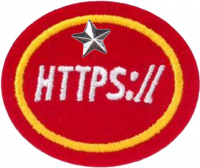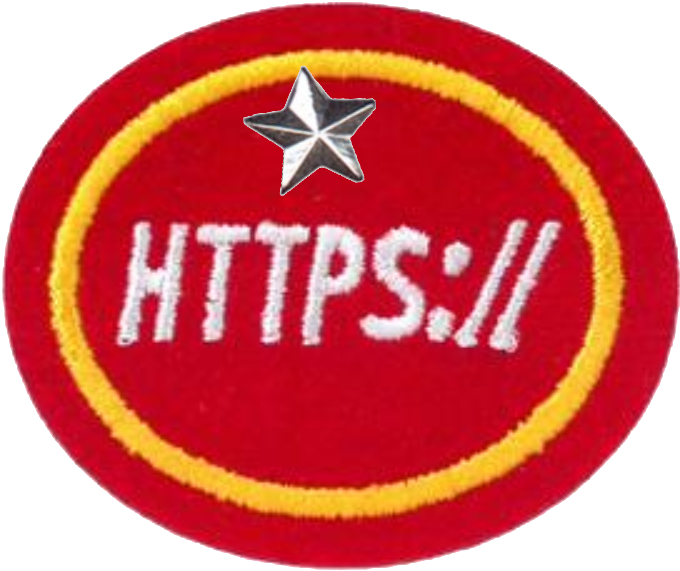Difference between revisions of "AY Honors/Internet - Advanced/Answer Key/es"
(Created page with "</noinclude> <!-- 3. Definir los siguientes términos (o sus equivalentes) y saber cuándo y cómo se utilizan: --> <noinclude>") |
(Created page with "</noinclude>") |
||
| Line 24: | Line 24: | ||
{{CloseReq}} <!-- 3a --> | {{CloseReq}} <!-- 3a --> | ||
{{ansreq|page={{#titleparts:{{PAGENAME}}|2|1}}|num=3b}} | {{ansreq|page={{#titleparts:{{PAGENAME}}|2|1}}|num=3b}} | ||
| − | <noinclude> | + | <noinclude></noinclude> |
| − | </noinclude | ||
| − | |||
| − | |||
| − | + | <noinclude></noinclude> | |
| − | <noinclude | ||
| − | |||
{{CloseReq}} <!-- 3b --> | {{CloseReq}} <!-- 3b --> | ||
{{ansreq|page={{#titleparts:{{PAGENAME}}|2|1}}|num=3c}} | {{ansreq|page={{#titleparts:{{PAGENAME}}|2|1}}|num=3c}} | ||
| − | <noinclude> | + | <noinclude></noinclude> |
| − | </noinclude | ||
| − | |||
| − | |||
| − | + | <noinclude></noinclude> | |
| − | <noinclude | ||
| − | |||
{{CloseReq}} <!-- 3c --> | {{CloseReq}} <!-- 3c --> | ||
{{ansreq|page={{#titleparts:{{PAGENAME}}|2|1}}|num=3d}} | {{ansreq|page={{#titleparts:{{PAGENAME}}|2|1}}|num=3d}} | ||
| − | <noinclude> | + | <noinclude></noinclude> |
| − | </noinclude | ||
| − | |||
| − | |||
| − | + | {{clear}} | |
| − | |||
| − | |||
| − | + | <noinclude></noinclude> | |
| − | <noinclude | ||
| − | |||
{{CloseReq}} <!-- 3d --> | {{CloseReq}} <!-- 3d --> | ||
{{ansreq|page={{#titleparts:{{PAGENAME}}|2|1}}|num=3e}} | {{ansreq|page={{#titleparts:{{PAGENAME}}|2|1}}|num=3e}} | ||
| − | <noinclude> | + | <noinclude></noinclude> |
| − | </noinclude | ||
| − | |||
| − | |||
| − | + | <noinclude></noinclude> | |
| − | <noinclude | ||
| − | |||
{{CloseReq}} <!-- 3e --> | {{CloseReq}} <!-- 3e --> | ||
{{ansreq|page={{#titleparts:{{PAGENAME}}|2|1}}|num=3f}} | {{ansreq|page={{#titleparts:{{PAGENAME}}|2|1}}|num=3f}} | ||
| − | <noinclude> | + | <noinclude></noinclude> |
| − | </noinclude | ||
| − | |||
| − | |||
| − | + | <noinclude></noinclude> | |
| − | <noinclude | ||
| − | |||
{{CloseReq}} <!-- 3f --> | {{CloseReq}} <!-- 3f --> | ||
{{ansreq|page={{#titleparts:{{PAGENAME}}|2|1}}|num=3g}} | {{ansreq|page={{#titleparts:{{PAGENAME}}|2|1}}|num=3g}} | ||
| − | <noinclude> | + | <noinclude></noinclude> |
| − | </noinclude | ||
| − | |||
| − | |||
| − | + | <noinclude></noinclude> | |
| − | <noinclude | ||
| − | |||
{{CloseReq}} <!-- 3g --> | {{CloseReq}} <!-- 3g --> | ||
{{CloseReq}} <!-- 3 --> | {{CloseReq}} <!-- 3 --> | ||
{{ansreq|page={{#titleparts:{{PAGENAME}}|2|1}}|num=4}} | {{ansreq|page={{#titleparts:{{PAGENAME}}|2|1}}|num=4}} | ||
| − | <noinclude> | + | <noinclude></noinclude> |
| − | </noinclude> | + | <!-- 4. Aprender y demostrar el uso de estas etiquetas HTML o demostrar su equivalente comando de construcción de un sitio web en uno de los lenguajes actuales de creación de sitios web (PHP, XML, etc.) --> |
| − | <!-- 4. | + | <noinclude></noinclude> |
| − | <noinclude | ||
| − | |||
{{ansreq|page={{#titleparts:{{PAGENAME}}|2|1}}|num=4a}} | {{ansreq|page={{#titleparts:{{PAGENAME}}|2|1}}|num=4a}} | ||
| − | <noinclude> | + | <noinclude></noinclude> |
| − | </noinclude | ||
| − | |||
| − | |||
| − | + | {{clear}} | |
| − | |||
| − | |||
| − | + | <noinclude></noinclude> | |
| − | <noinclude | ||
| − | |||
{{CloseReq}} <!-- 4a --> | {{CloseReq}} <!-- 4a --> | ||
{{ansreq|page={{#titleparts:{{PAGENAME}}|2|1}}|num=4b}} <!--T:11--> | {{ansreq|page={{#titleparts:{{PAGENAME}}|2|1}}|num=4b}} <!--T:11--> | ||
| − | <noinclude> | + | <noinclude></noinclude> |
| − | </noinclude | ||
| − | |||
| − | |||
| − | + | <noinclude></noinclude> | |
| − | |||
| − | <noinclude | ||
| − | |||
{{CloseReq}} <!-- 4b --> | {{CloseReq}} <!-- 4b --> | ||
{{ansreq|page={{#titleparts:{{PAGENAME}}|2|1}}|num=4c}} <!--T:23--> | {{ansreq|page={{#titleparts:{{PAGENAME}}|2|1}}|num=4c}} <!--T:23--> | ||
| − | <noinclude> | + | <noinclude></noinclude> |
| − | </noinclude | ||
| − | |||
| − | |||
| − | + | <noinclude></noinclude> | |
| − | <noinclude | ||
| − | |||
{{CloseReq}} <!-- 4c --> | {{CloseReq}} <!-- 4c --> | ||
{{ansreq|page={{#titleparts:{{PAGENAME}}|2|1}}|num=4d}} <!--T:12--> | {{ansreq|page={{#titleparts:{{PAGENAME}}|2|1}}|num=4d}} <!--T:12--> | ||
| − | <noinclude> | + | <noinclude></noinclude><noinclude></noinclude> |
| − | </noinclude> | ||
| − | |||
| − | |||
| − | <noinclude | ||
| − | |||
{{CloseReq}} <!-- 4d --> | {{CloseReq}} <!-- 4d --> | ||
{{ansreq|page={{#titleparts:{{PAGENAME}}|2|1}}|num=4e}} <!--T:13--> | {{ansreq|page={{#titleparts:{{PAGENAME}}|2|1}}|num=4e}} <!--T:13--> | ||
| − | <noinclude> | + | <noinclude></noinclude> |
| − | </noinclude | ||
| − | |||
| − | |||
| − | |||
| − | + | <noinclude></noinclude> | |
| − | <noinclude | ||
| − | |||
{{CloseReq}} <!-- 4e --> | {{CloseReq}} <!-- 4e --> | ||
{{ansreq|page={{#titleparts:{{PAGENAME}}|2|1}}|num=4f}} <!--T:24--> | {{ansreq|page={{#titleparts:{{PAGENAME}}|2|1}}|num=4f}} <!--T:24--> | ||
| − | <noinclude> | + | <noinclude></noinclude> |
| − | </noinclude | ||
| − | |||
| − | |||
| − | |||
| − | + | <noinclude></noinclude> | |
| − | <noinclude | ||
| − | |||
{{CloseReq}} <!-- 4f --> | {{CloseReq}} <!-- 4f --> | ||
{{ansreq|page={{#titleparts:{{PAGENAME}}|2|1}}|num=4g}} <!--T:14--> | {{ansreq|page={{#titleparts:{{PAGENAME}}|2|1}}|num=4g}} <!--T:14--> | ||
| − | <noinclude> | + | <noinclude></noinclude> |
| − | </noinclude | ||
| − | |||
| − | |||
| − | |||
| − | |||
| − | |||
| − | + | <noinclude></noinclude> | |
| − | <noinclude | ||
| − | |||
{{CloseReq}} <!-- 4g --> | {{CloseReq}} <!-- 4g --> | ||
{{ansreq|page={{#titleparts:{{PAGENAME}}|2|1}}|num=4h}} <!--T:15--> | {{ansreq|page={{#titleparts:{{PAGENAME}}|2|1}}|num=4h}} <!--T:15--> | ||
| − | <noinclude> | + | <noinclude></noinclude> |
| − | </noinclude | ||
| − | |||
| − | |||
| − | |||
<div lang="en" dir="ltr" class="mw-content-ltr"> | <div lang="en" dir="ltr" class="mw-content-ltr"> | ||
Revision as of 15:06, 18 May 2021
Nivel de destreza
3
Año
2006
Version
20.05.2024
Autoridad de aprobación
Asociación General
1
Para consejos e instrucciones, véase Internet.
2
Para consejos e instrucciones, véase [[AY Honors/Computer/es|]].
3
3a
3b
3c
3d
3e
3f
3g
4
4a
4b
4c
4d
4e
4f
4g
4h
4i
Line break (no extra space)
4j
Horizontal rule (a line running left-to-right across the page, to separate one section from the next)
4k
Ordered, or numbered, list. Each list item begins with the tag <li> and falls somewhere between the <ol>...</ol> tags.
Example
<ol>
<li>List Item</li>
<li>List Item</li>
</ol>
Turns into this:
- List Item
- List Item
4l
Unordered, or bulleted, list. Again, each list item begins with the tag <li>.
Example
<ul>
<li>List Item</li>
<li>List Item</li>
</ul>
Turns into this:
- List Item
- List Item
4m
<a href="filename.html">...</a>
A hotlink to another file in the same folder
<a href="http://URL">...</a>
A hotlink to another site. You will have to know the Uniform Resource Locator (URL), or Web address, of any site to which you want to link your page.
4n
<img src="image.gif">
This tag would insert an image with the filename "image.gif" on the far left side of your page.
A great reference for HTML tags can be found at W3Schools
5
6
6a
- i. Three web graphics are supported by the majority of web browsers (gif, jpg, and png). JPG are great for photographs, and gifs work well for clipart, navigation buttons, anything that has transparent areas, and just about anything else. PNG graphics are still not widely accepted, but when they are they will be great, offering lossless compression and displaying images on the web. The advantages of PNG is that it supports images with millions of colors and produces background transparency without jagged edges. These files are 3-15% smaller than gifs, the format they were created to replace. They’re also open source, meaning that its free to create them, manipulate them, and use the png codex to create them.
- ii. Many programs such as Adobe Photoshop and Corel Draw offer a “save to web” feature that lowers the actual number of colors SAVED in the graphic. While millions of colors may be saved in a large digital photograph, by reducing its size and color-depth, it is possible to shrink many pictures to less than 5% of their original size.
6b
From the definitions section you already know what web safe colors are. You should use them whenever you are creating banners, headers, text colors, navigation buttons, or other features of a standard website. Use this knowledge to create a jpg and a gif that are both under 15k, but that are still easily viewable on a website, and to create at least five graphical navigation buttons and a title header for your website.
7
7a
7b
7c
7d
7e
7f
Equipment / Resources for fulfilling the Advanced Internet Honor:
- Computer (either Macintosh or PC) with browser support -- many editing programs are built into the Web 2.0 interface, meaning that all you have to do is login and start editing your webpages/website. OR in some classic environments, you may need to edit with an HTML editing program or WYSIWYG web design program. On a PC, "Notepad" or on a Mac, "TextEdit" can create HTML and freeware such as Komposer (PC, Mac, Linux) are available.
- A scanner, a digital camera or another means of getting photos on the computer.
- Web space can be obtained for free almost anywhere, just do a search for “free web hosting.” Be aware that most free sites are ad supported and those ads may NOT support the ideals of your organization. If you are creating a site for an Adventist church/school, you have free website space already from adventistchurchconnect.com. Contact them or login for more information.
- Pages using DynamicPageList3 parser function
- AY Honors/Prerequisite/Internet/es
- AY Honors/See Also/Internet/es
- AY Honors/Prerequisite/Computer/es
- AY Honors/See Also/Computer/es
- Adventist Youth Honors Answer Book
- Adventist Youth Honors Answer Book/Do at home
- Missing Localization/All/Internet Advanced AY Honor.png/es
- Missing Localization/All/Modern Technology/en
- Missing Localization/All/Science and Technology/en
- Missing Localization/Honors/Computer/es


